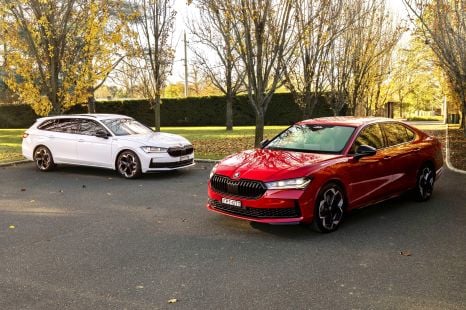

Max Davies
2025 Skoda Superb Sportline review
2 Months Ago
The Kia Picanto is due for a facelift later this year, but the turbocharged GT still could be the most fun you can have for under $20,000.

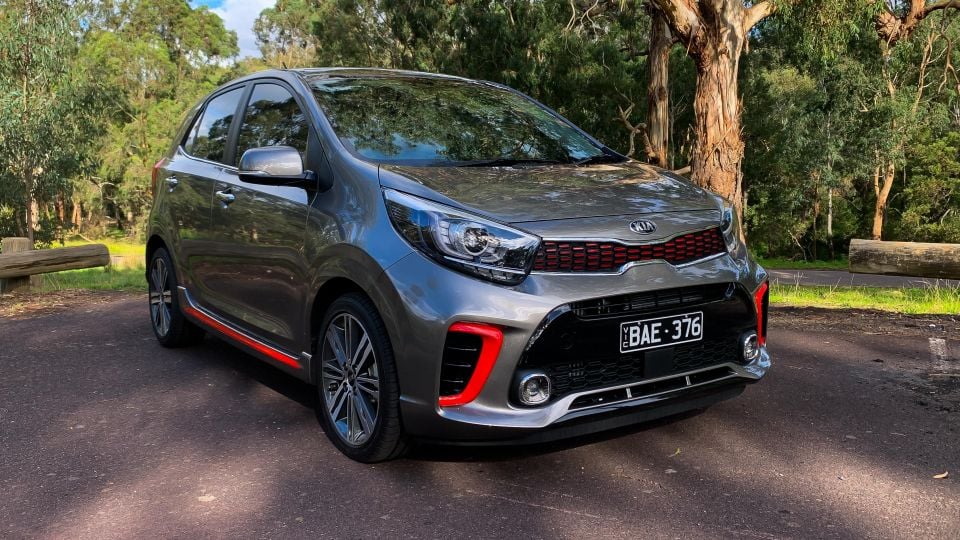

Marketplace Editor
New from
$14,190
excl. on-roads

Marketplace Editor
New from
$14,190
excl. on-roads


Marketplace Editor
New from
$14,190
excl. on-roads

Marketplace Editor
New from
$14,190
excl. on-roads
Quickly see how this car stacks up against its competition. Select any benchmark to see more details.
Where expert car reviews meet expert car buying – CarExpert gives you trusted advice, personalised service and real savings on your next new car.
The Kia Picanto is the undisputed king of the micro car segment. It’s seen rivals come and go, and now accounts for around three quarters of the segment’s volume in Australia.
Key selling points include a vast array of features and technologies for budget pricing, distinctive looks, and of course Kia’s industry-leading seven-year, unlimited kilometre warranty.
To spice things up a bit, Kia added a turbocharged ‘GT’ model at the very beginning of 2019, which is something of a unicorn in this segment and price point. Many Volkswagen fans groan at the fact you can’t buy an Up! GTI in Australia – this might be the closest you can get to one Down Under.
So, is the Kia Picanto GT a budget hot hatch bargain, and should you wait for the facelifted model that’s just months away?

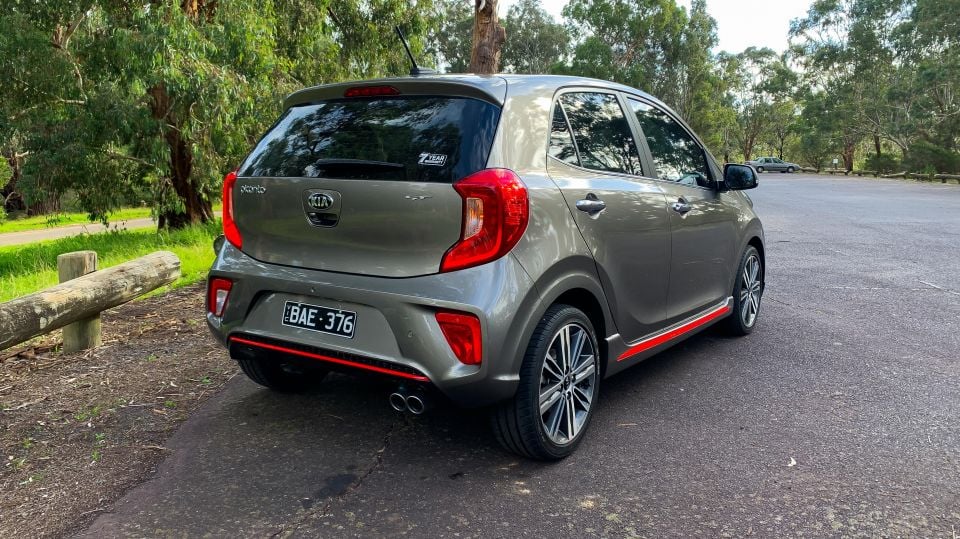
For 2020, the Picanto GT is listed at $18,190 plus on-road costs – a little up on the super-sharp $17,990 drive-away pricing it launched with in January last year.
At the time of writing, Kia Australia is advertising the Picanto GT for $19,190 drive-away, which is still pretty cheap once you consider the level of standard equipment and turbocharged performance available.
The only factory option available is a selection of metallic paints, such as the lovely Titanium Silver metallic ($520) fitted to our test car.
Also keep in mind the Kia Picanto GT is a manual-only proposition, if you want an auto you’ll need to swap out the turbocharged engine for a 1.25-litre (very specific, we know) naturally-aspirated unit and a four-speed automatic, as well as ‘GT-Line’ badges instead of ‘GT’.
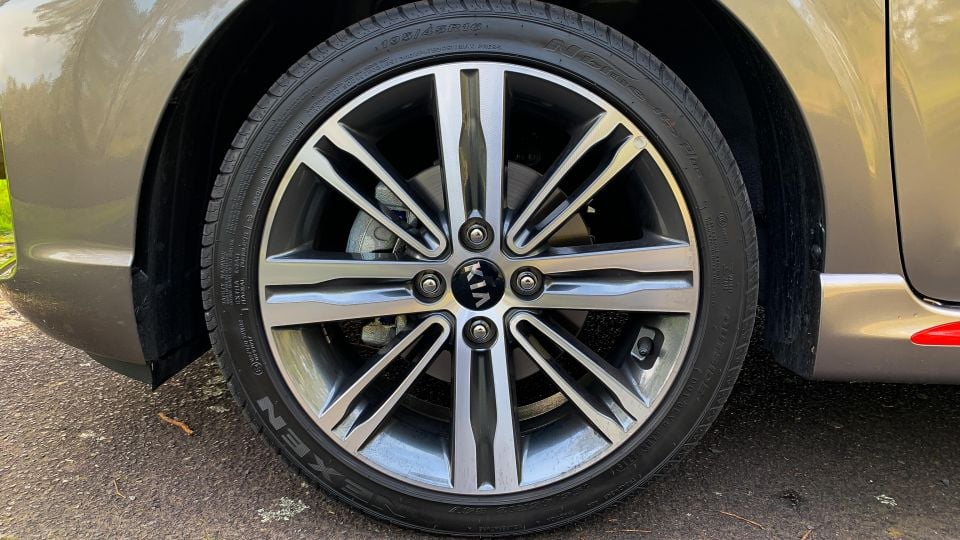
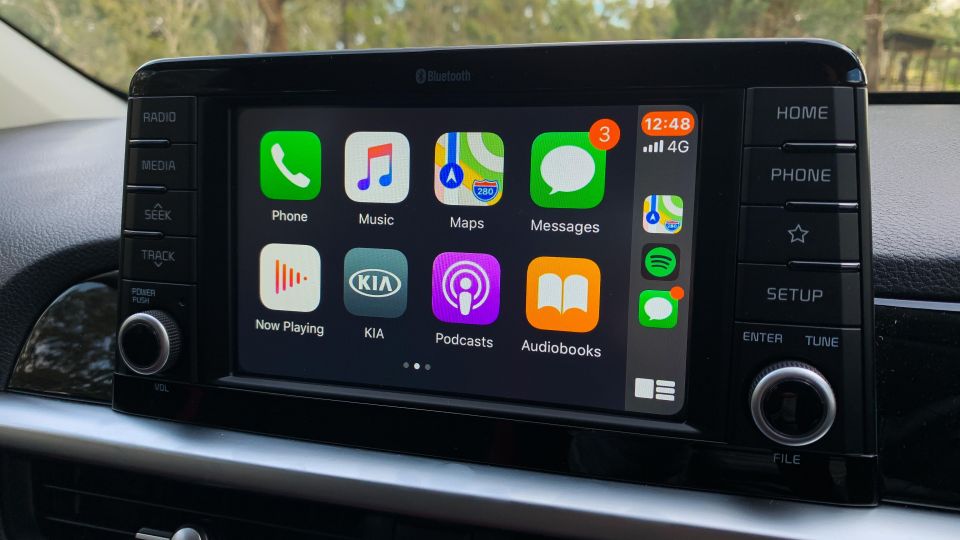
Despite being an entry-level city car, the Picanto packs quite a but of kit in for your sub-$20,000 spend.
Key equipment highlights for the Picanto GT include sports-tuned suspension and steering by the company’s local division, as well as that model-specific 74kW/172Nm 1.0-litre turbocharged three-cylinder petrol engine. More on the powertrain a little bit later.
Otherwise, the Picanto GT essentially mirrors the spec of the GT-Line, which means you get sporty exterior styling – bumpers, side skirts, twin tailpipes and 16-inch alloys – leather-look seat and steering wheel trim with red accents and stitching, alloy pedals, halogen projector headlights with LED daytime-running lights, front fog lights, partial LED tail-lights, and electric-folding side mirrors.
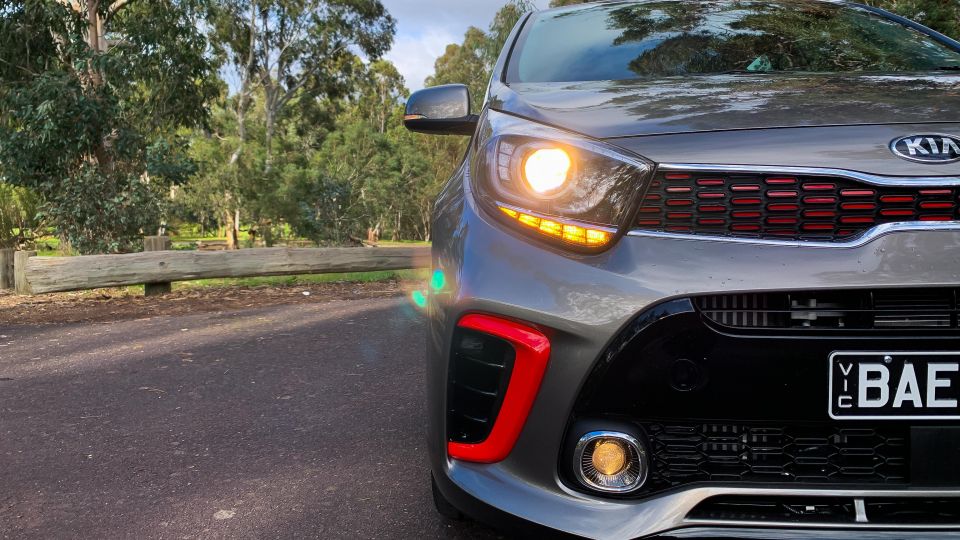
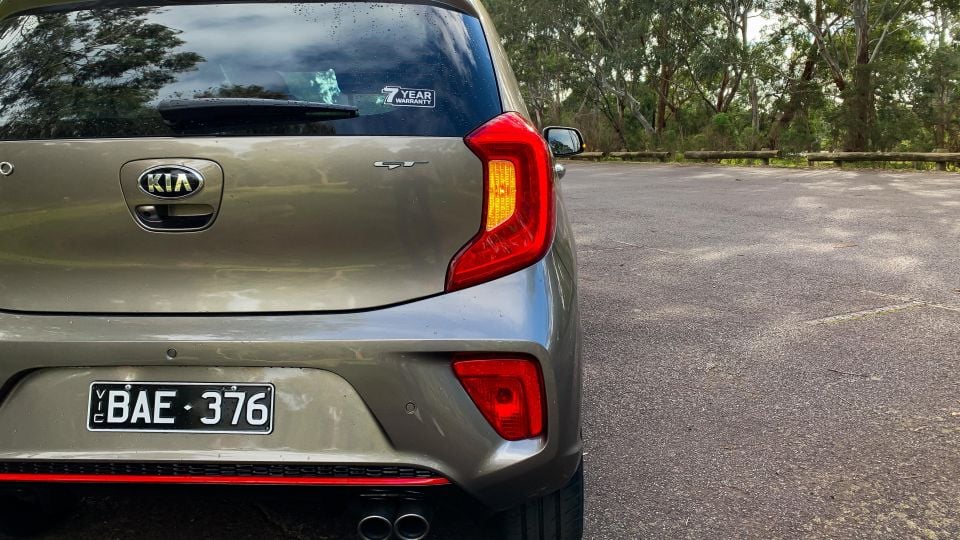
Carryover specification from the entry-level Picanto S includes low- and high-speed autonomous emergency braking with forward collision warning, a reversing camera with dynamic guidelines, rear parking sensors, cruise control with speed limiter, as well as a 7.0-inch touchscreen infotainment system with Apple CarPlay and Android Auto.
It’s a shame the Australian market misses out on some other high-end features available in other markets, namely climate control, heated front seats and steering wheel, as well as inbuilt satellite navigation to complement the standard smartphone mirroring.
Buyers in Europe can also get an electric sunroof, keyless start and a wireless phone charger, two features that would gel well with Aussie tastes.
Serving as the flagship for the Picanto range in Australia, the GT is handsomely equipped.
However, at this price it’s duking it out with entry-level versions of larger vehicles such as the Skoda Fabia 70TSI Ambition (from $17,490) and Volkswagen Polo 70TSI Trendline (from $18,990) which may not look as sporty but pack similar powertrains and technology features for equivalent money.
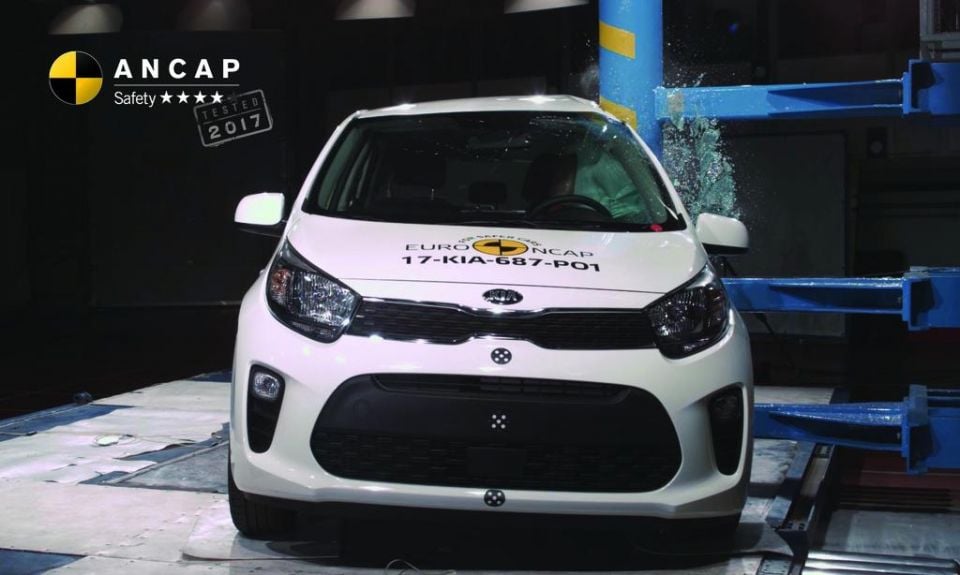
All versions of the Picanto wear a four-star ANCAP safety rating with 2017 date stamp, based on crash tests conducted by sister firm, Euro NCAP.
The little Kia Picanto managed a respectable 87 per cent for adult occupant protection but was let down by 64 per cent child occupant score, as well as 54 per cent for pedestrian protection and 47 per cent for safety assist.
Key feedback included marginal rear passenger head and chest protection in the full-width frontal test, marginal chest protection for the driver in the frontal offset test, and marginal whiplash protection for both front- and rear-seat occupants.
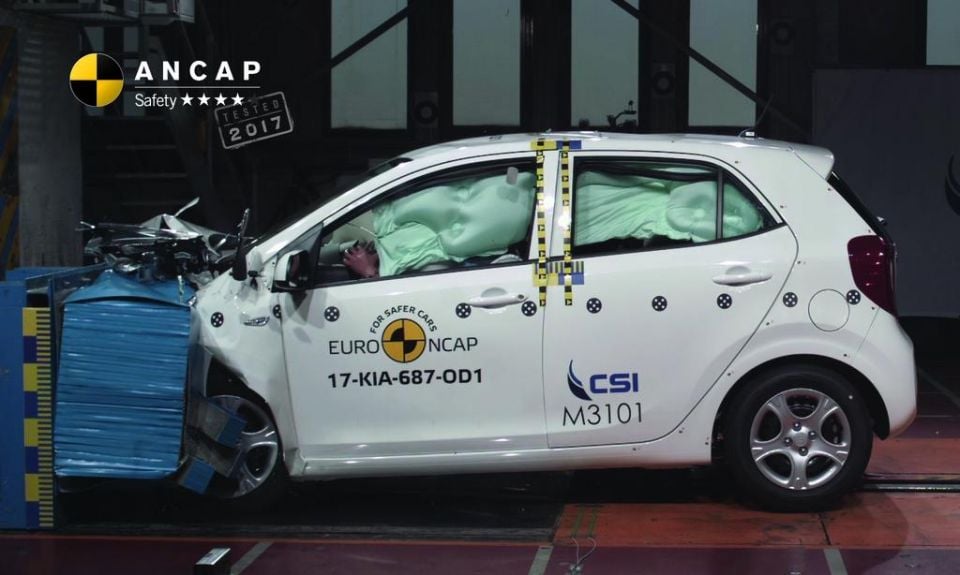
There was also poor neck protection for the 10-year old dummy in the frontal offset test, as well as poor protection for the head and chest for the 10-year old dummy in the side impact test – where the dummy’s head made contact with the vehicle’s interior.
ANCAP and Euro NCAP also didn’t test the speed limiter included as standard on Australian and New Zealand models, meaning the Picanto scored 0 out of 3 for speed assistance systems which makes up one quarter of the Safety Assist category.
Standard safety equipment includes six airbags (dual front, side and curtain), autonomous emergency braking (urban and interurban), forward collision warning, and the requisite electronic aids like ABS, stability control and traction control.
The Picanto may not be best suited as a family car based on the crash test results, but is still head and shoulders ahead of rivals like the ageing Fiat 500 and Mitsubishi Mirage, with the former wearing an archaic five-star safety rating from 2008 (and likely would score nowhere near that today) and the latter a five-star stamp from 2013.
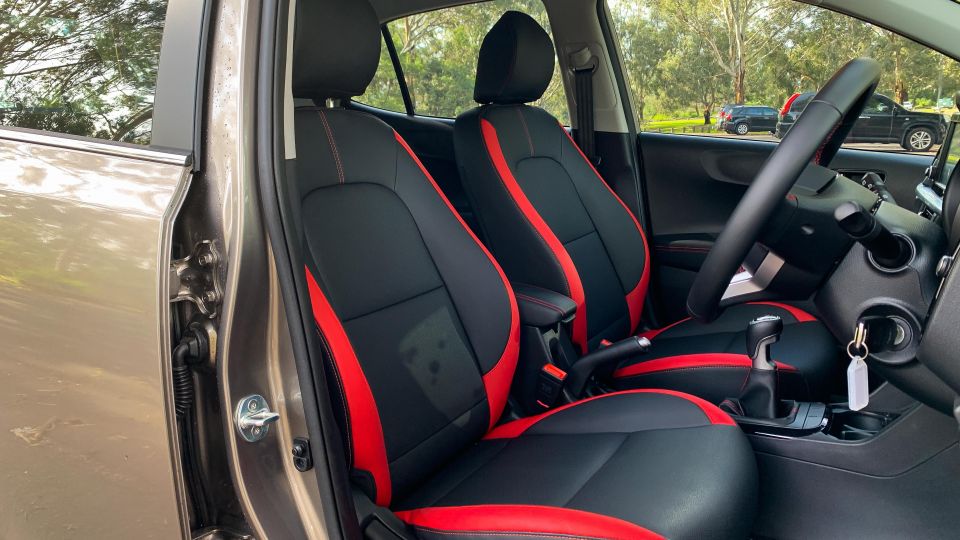

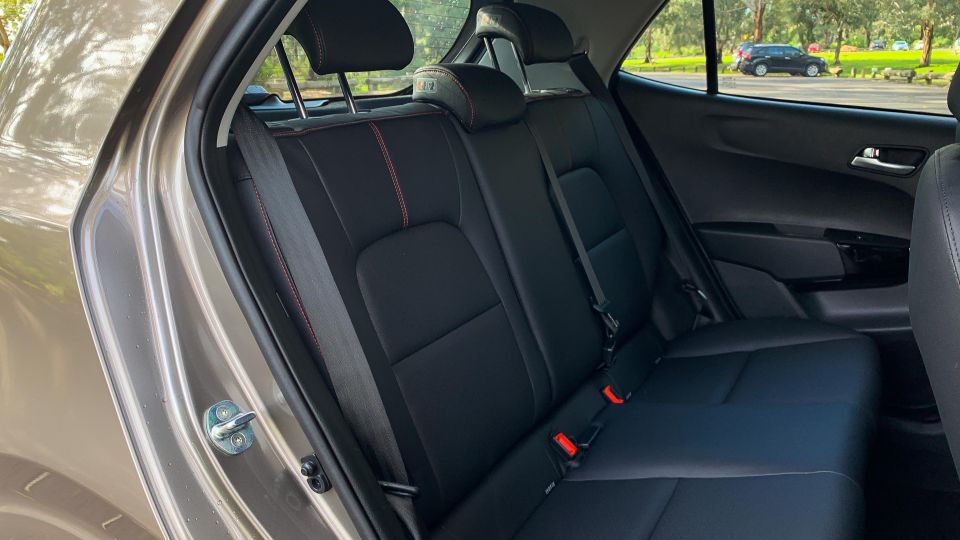
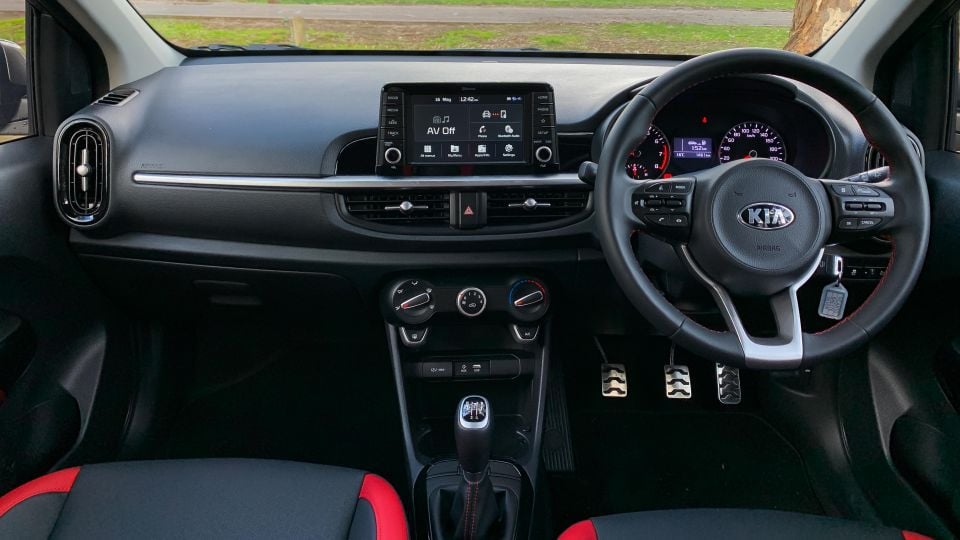
Despite its budget car origins, the Picanto GT’s interior presents nicely, with a modern, upmarket design and a good choice of materials and textures.
The leather-look touch points feel nice in the hand and the free-standing 7.0-inch touchscreen are very good, while the faux hide seat upholstery looks cool but is a bit hard and slippery.
It’s a very simple layout ergonomically, with a minimalistic approach to switchgear to maximise the feeling of space, and all the controls fall easily within arm’s reach. A minor omission is the lack of a digital speedometer in the monochromatic driver’s instrument display, though the incoming facelift will bring a larger 4.3-inch TFT display with a digital speed readout, amongst other upgrades.
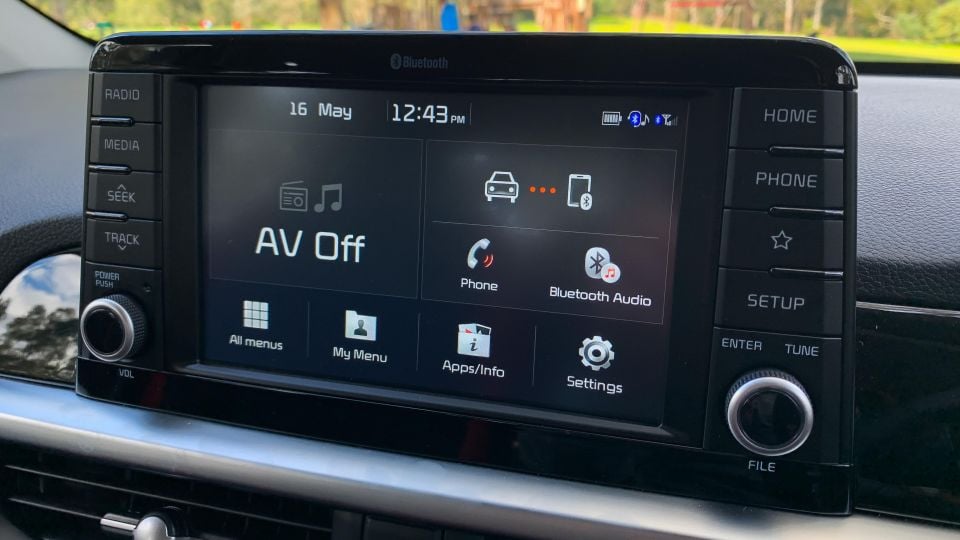
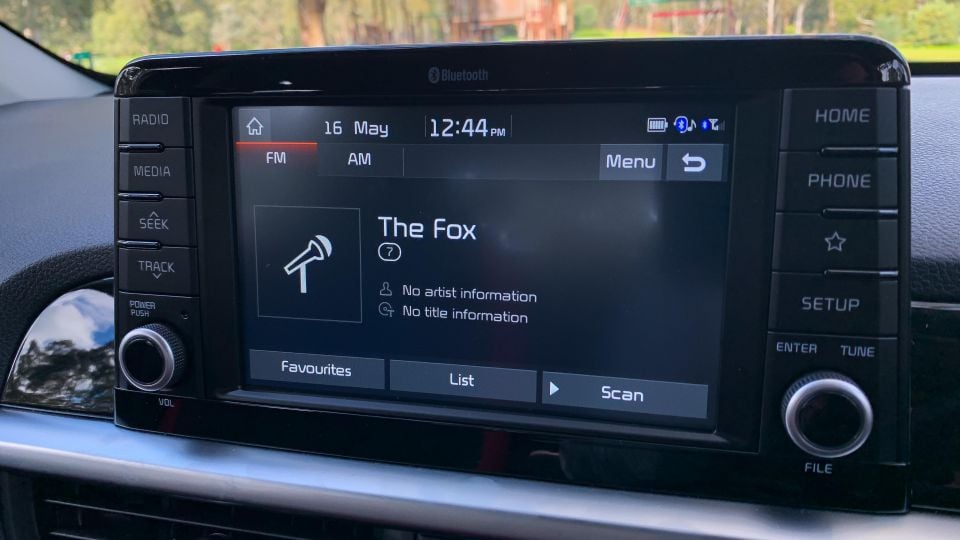
The infotainment display is clear and responsive, and smartphone mirroring worked flawlessly. We were also very impressed with the sound quality from the standard six-speaker stereo.
You won’t find many soft-touch materials bar the elbow rests in the doors and the centre armrest up front, but that’s pretty par for the course at this end of the market. Regardless, everything feels very well built and ready to stand the test of time.
For taller drivers like six-foot-one-ish me, there’s good head- and legroom up front thanks to that tall van-like roofline. That said, the steering wheel lacks reach adjustment and the front seats aren’t too sculpted which means it can take a bit of experimenting to find the perfect driving position.
I’m normally not one to complain about lumbar support either but there’s a noticeable lack of lower back support for taller drivers, which can leave you a bit sore after long journeys or bumpy roads.
Moving into the second row, there’s no escaping the fact the Picanto is tiny. However, you can fit regular-sized people back there for short trips, and kids will be just fine.
There’s also ISOFIX mounts on the outer rear seats if you need to carry little kiddies in capsules, adjustable headrests for all three seating positions, as well as top-tether points for each rear pew.
But we’d argue the rear-centre seat is largely redundant unless it’s a very small child, and there’s next to no amenities in the second row – though that’s not out of place for the class.
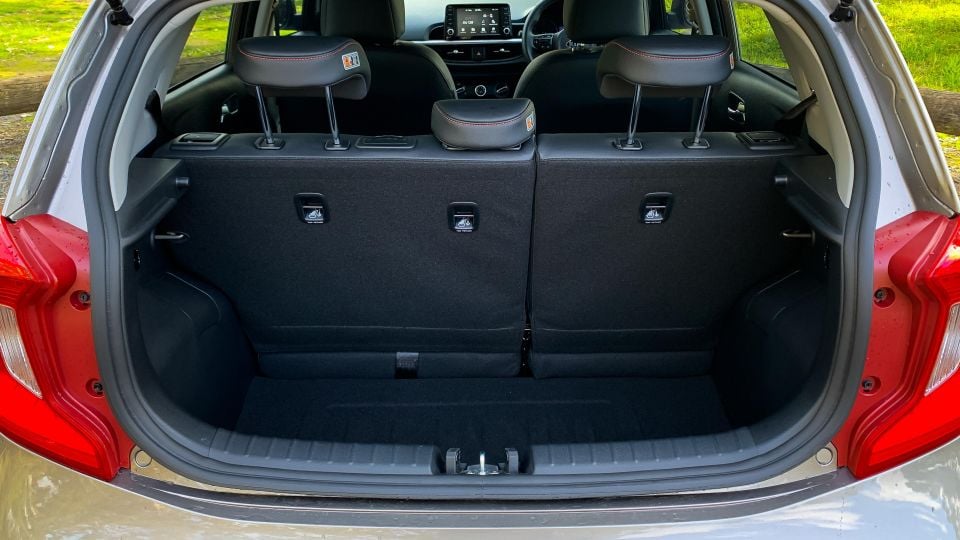
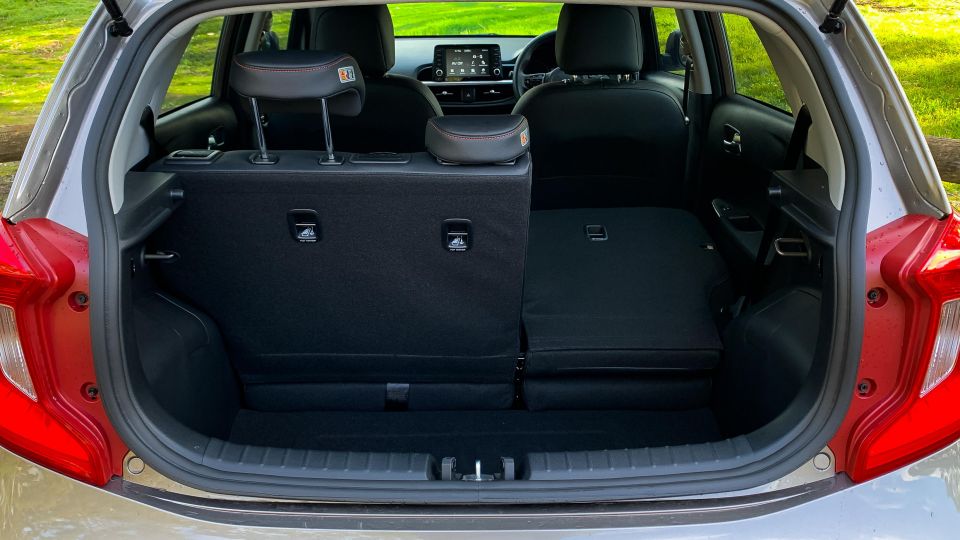

Further back again the Picanto offers a respectable 255L of claimed cargo volume, which is more than the quoted boot capacities for the larger Mazda 2 and Suzuki Swift with the rear seats in place. However, the skinny and deep shape means squarer items will necessitate folding the rear seatsn.
Speaking of folding down the second-row seat backs, the Picanto’s luggage area opens to a more accommodating 1010L in two-seat form, though there’s a large step up from the boot floor to the seat backs.
That said, the rear pews do fold quite flat, so the Picanto is quite capable of lugging around larger items should you require. Under the boot floor you’ll find a temporary space saver spare.

You’ll find the GT’s distinguishing feature here. Power comes from a model-specific 1.0-litre ‘T-GDI’ three-cylinder petrol engine, driving the front wheels exclusively through a five-speed manual transmission.
The little motor outputs a respectable 74kW of power at 4500rpm, and a healthy 172Nm of torque between 1500 and 4000rpm.
By comparison, the 1.25-litre naturally-aspirated four-cylinder engine in the wider Picanto range develops 62kW at 6000rpm and just 122Nm at 4000rpm.
Fuel use is rated at just 4.8L/100km on the combined cycle, and the Picanto is happy running on 91RON regular unleaded.
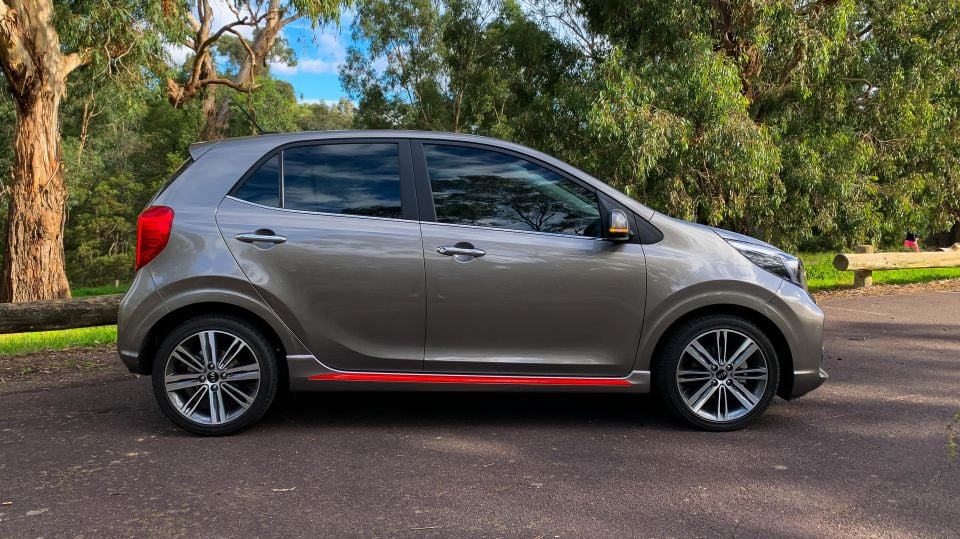
Firing up the three-cylinder engine with the turn-key ignition, you don’t really get a sense of the motor’s rumbly character or unique exhaust note.
At idle and even on cold starts the cabin is well-suppressed from engine noise, which is a contrast to something like a Mazda 2 which really likes to let you know you’ve turned it on in the cold.
Being a modern city car, the manual transmission has been tuned with comfort and ease-of-use in mind, so don’t be surprised if it takes a little getting used to the somewhat-numb clutch and shift action – you eventually adjust, and it makes driving in traffic a bit less arduous.
First and second gears are quite long, too, and the engine loves to be revved. It’s here you’ll experience the charming engine note and boosty nature of that 1.0-litre T-GDI motor. From a standstill you might feel a bit of lag off the line but hit that maximum torque band at 1500rpm and you’ll get a nice shove in the back as the turbo comes on boost.
Around the city and the ‘burbs, the Picanto is a hoot to drive. It’s peppy, easy to place, and is relatively comfortable despite the firmer steering and suspension tune of the GT variant.
Parking is a breeze thanks to the compact dimensions, good outward visibility and excellent reversing camera, and navigating tight city streets and car parks is an absolute cinch.
The cabin is well insulated from engine noise as mentioned earlier, and road noise is acceptable given the segment this car competes in. You do notice some tyre roar over rougher patches, though.
Despite the city-centric focus, the Picanto is surprisingly capable on the freeway should you need to venture out onto the open road. Especially with the fifth cog in the manual, the little Kia happily cruises along at triple-figure speeds, and feels planted enough to inspire confidence.
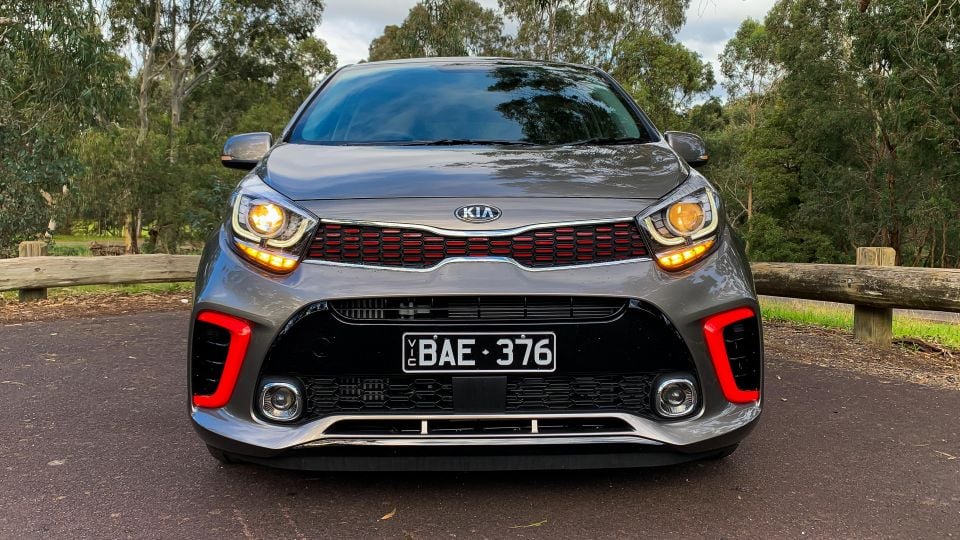
Kia doesn’t quote a 0-100km/h time in Australia, though according to the UK division’s specifications, the Picanto with this drivetrain should hit 60mph (97km/h) in 9.8 seconds, and top out at 180km/h.
Not that you’ll ever need the latter figure in heavily-policed Australia, but the relatively high top end shines through in the Picanto’s high-speed stability and refinement. Impressive.
Having the added grunt from the turbo model also means going up hills or overtaking is less daunting, and the cruise does a great job keeping a constant speed – something a handful of more expensive Kias can struggle with.
You’ll notice the seats and cabin insulation lack the refinement of vehicles from the class above, but if you mostly drive around town the odd freeway run isn’t going to leave you battered and bruised.
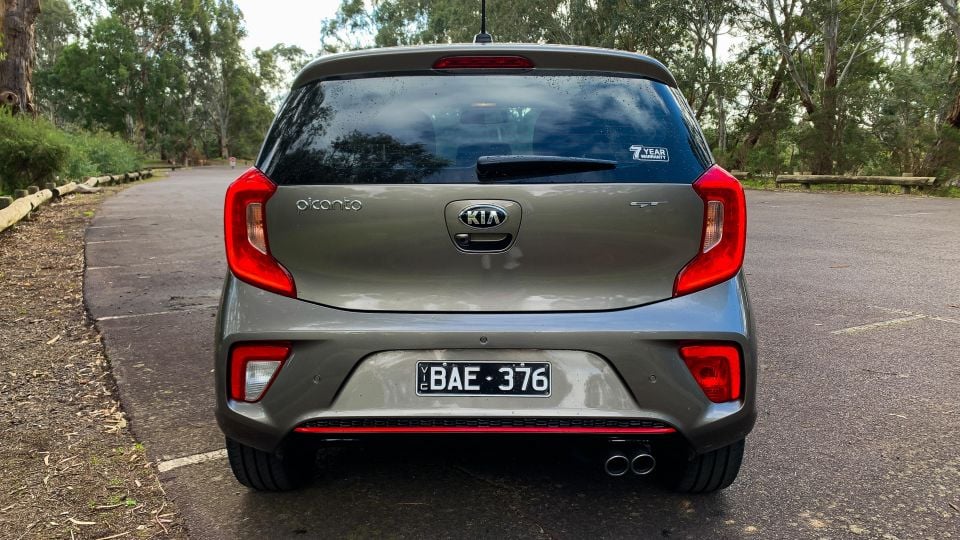
In fact, I took the Kia on a Sunday morning drive day with some friends, which took us out from Doncaster in Melbourne’s east to Yarra Glen in the Victorian hills.
Despite being in the company of a V8 Commodore, European hot hatches and even a heavily-modified turbocharged Toyota 86, the Picanto proved to be a stack of fun with plenty to give even on winding B-roads.
The Picanto offers a surprising amount of grunt for rolling acceleration and good grip with the itty-bitty 195/45 R16 Nexen N’blue rubber – these are eco-friendly tyres but with a performance bent.
I couldn’t wipe the smile off my face, and my performance car-loving friends were fascinated by the standout design and relatively cheap pricing.
So to answer the question – how does the Picanto GT drive? Very well. Big tick!
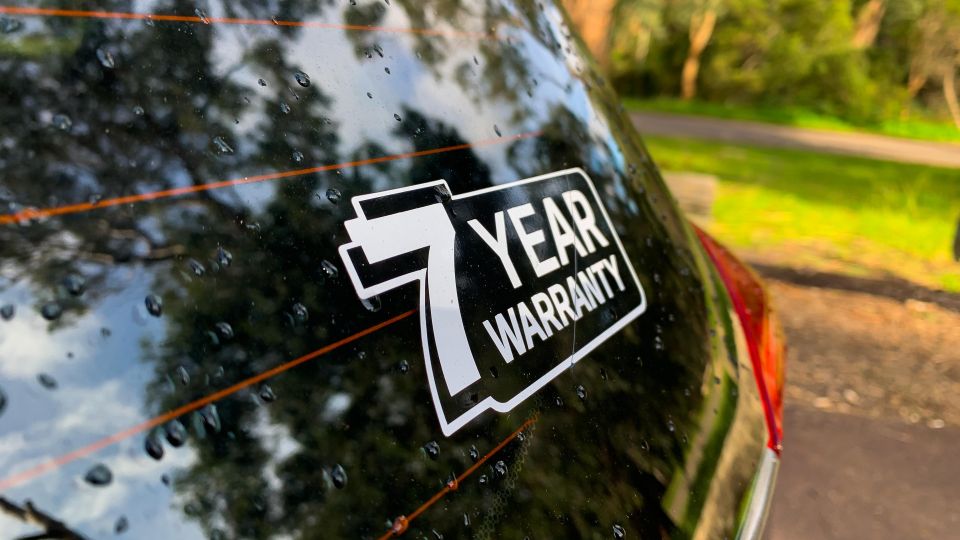
Where expert car reviews meet expert car buying – CarExpert gives you trusted advice, personalised service and real savings on your next new car.
As with the wider Kia line-up, the Picanto is covered by a seven year, unlimited kilometre warranty with seven years of capped-price servicing and up to eights years of roadside assistance.
Scheduled maintenance is required every 12 months or 10,000km – you’ll notice this is shorter than Kia’s usual intervals, because the company has 10,000km increments for turbo models.
The first three visits cost $271, $452 and $315, totalling $1038 for the first 36 months or 30,000km. It’s not exactly ‘cheap’, and not far off Euro vehicles like the aforementioned Fabia and Polo. Visits four and five are $495 and $305 respectively, bringing the five-year total to $1838, with visit numbers six and seven asking for $555 and $571.
By comparison, the Mitsubishi Mirage will cost $199 a pop for the first three services, while the soon-to-be replaced Toyota Yaris will cost you $145 per visit every six months for up to 24 months/40,000km.
We found the Kia Picanto GT to be quite a bit thirstier than the manufacturer’s claim, seeing an indicated 6.8L/100km from over 360 kilometres of mixed driving. That’s a whole 2.0L/100km more than Kia’s claim, and means you can realistically achieve around 500km per fill of the Picanto’s tiny 35L fuel tank.
Australian models miss out on fuel-saving idle stop/start tech available in markets in Europe, which would help minimise fuel use in slow-moving city traffic. At least it will run happily on 91 RON fuel, so it won’t be expensive to fill.

Aussie singer/songwriter Sia once said: “baby I don’t need dollar bills to have fun tonight (I love cheap thrills)”, and the Picanto GT really embodies that vibe.
For a very minimal spend relative to the Australian new car market, you can have a fun-to-drive compact city car that has all the tech and features you really need, as well as space for people and luggage for the odd occasion you aren’t driving by yourself.
It looks cool, is affordable to run (provided you aren’t doing more than 10,000km per annum), and is backed by the industry’s leading warranty program.
There’s a few areas for improvement, though, namely the seats, real-world fuel consumption, service costs and lack of some features reserved for overseas markets, but other than that there’s not a lot to complain about.
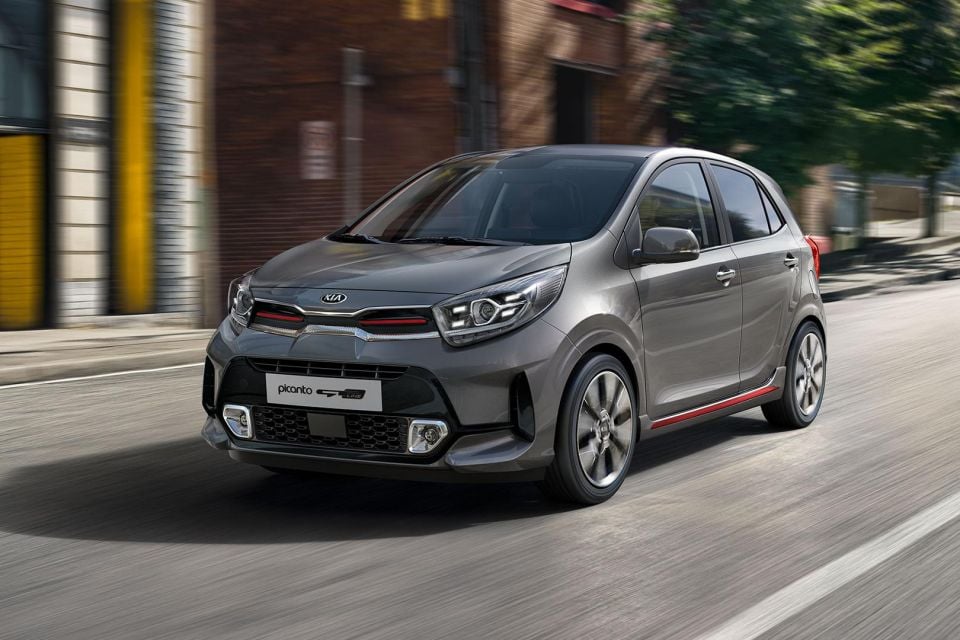
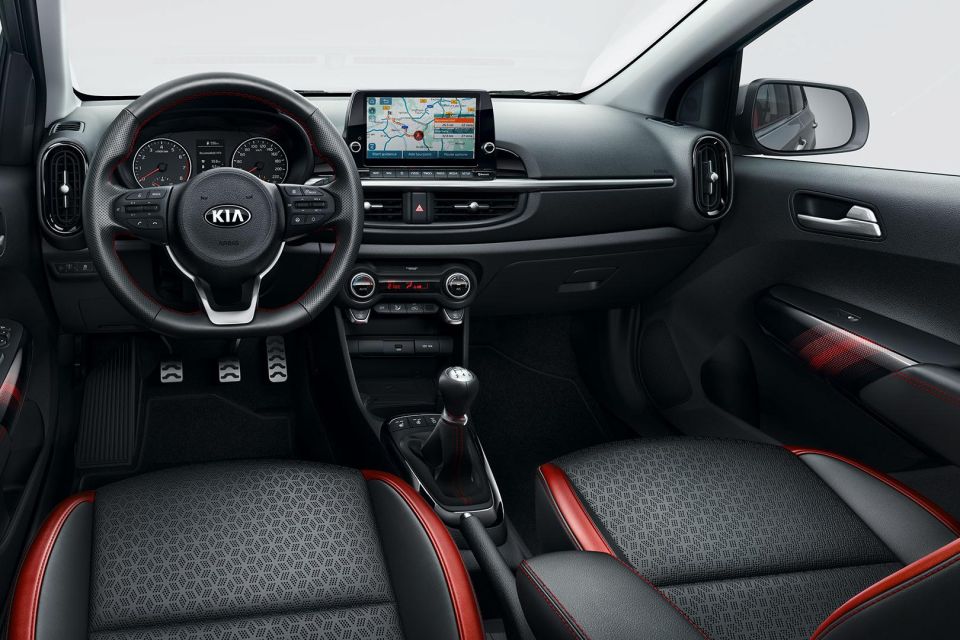
Later this year Kia Australia will introduce an updated Picanto range, with fresh looks, an upgraded 8.0-inch infotainment system with wireless Apple CarPlay and a new-generation 1.0-litre turbo engine with the same outputs – likely more efficient – but again we’ll miss out on the added safety systems like lane-keep assist and blind-spot monitoring available overseas.
The infotainment system would be worth the wait in my books, but the current model is a fine car for the money, and you’ll join the thousands of happy Picanto owners across the country.
With that said, I’d also seriously consider a Fabia 70TSI Ambition manual or Polo 70TSI Trendline manual at this price point because they’re far more capable on the open road, and offer a bit more space and refinement. You can also deck out the Skoda with a host of personalisation and convenience options which the Kia just can’t match.
It’s hard to look past the Kia Picanto, however. The little Korean has an intoxicating charm and character while also being a bargain – it’s certainly worth a test drive.
Where expert car reviews meet expert car buying – CarExpert gives you trusted advice, personalised service and real savings on your next new car.
James is an automotive journalist based in Melbourne, Australia. Before joining CarExpert.com.au in 2020, James has worked at leading auto media outlets including Carsales and CarAdvice, as well as at Pulse agency for Ford Australia's communications team. In 2019 James made Mumbrella's 'Top 20 most prolific web authors in Australia' list after publishing 1,360 articles between March 1, 2018 and February 28, 2019 for CarAdvice. James is also an Ambassador for Drive Against Depression – an Australian charity whose mission is to support mental wellness through the freedom of driving and a shared love of cars.


Max Davies
2 Months Ago
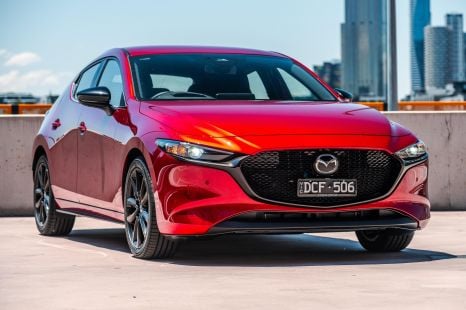

Josh Nevett
2 Months Ago
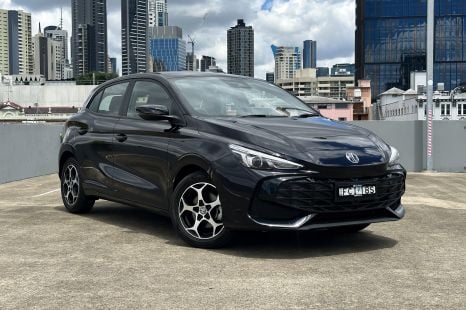

William Stopford
2 Months Ago


Josh Nevett
1 Month Ago


Josh Nevett
1 Month Ago


Matt Campbell
1 Month Ago